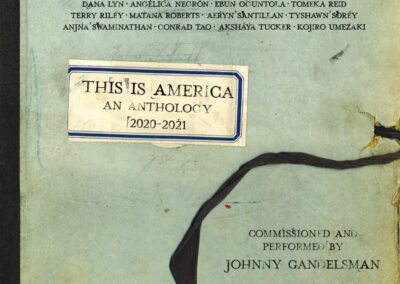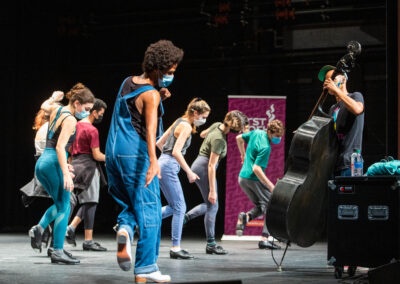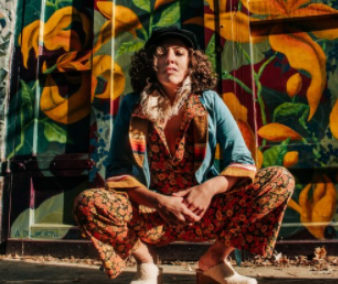Overview
In this musical, of which excerpts are available, students will experience a whooping crane’s story of climate migration. After a fire in the polluted tar sands of Canada, Ajijaak the young crane became separated from her family. Armed with a medicine bundle for guidance gifted by her parents, she must make the journey down to the Gulf Coast solo. Along the way, Ajijaak learns lessons from other animals as well as people from a variety of Indigenous tribes she meets, all contributing to the budding confidence she needs to find her way. Ajijaak’s journey highlights the symbiotic relationship between whooping cranes and Indigenous communities, as well as cultural ways of being that work with, not against, nature.
Video: Watch FirstWork’s Artist Talk with Heather Henson (5:14)
This video provides a behind-the-scenes look at the musical, Ajijaak on Turtle Island. Students will learn about the many layers of intentionality throughout making of this show, ranging from its overall perspective and life lessons/deeper meaning to reflect upon, down to the details of animals chosen and the stories they arise from, the materials the puppets and set design were derived from. This video spotlights the rich symbolism of Indigenous folklore. For example, turtle Island is what many North American Indigenous tribes (I.e. Anishinaabe and Iroquois) call this continent. Understand the intentionality behind the natural materials carefully chosen for the set and puppets’ designs. Animal puppets were crafted from materials that reflect their environments (i.e. birch bark deer, bison made of grass for the grasslands).
Learn about how and why various crane species are revered in many Indigenous cultures around the world. In Bhutan, for example, people pay attention to the cranes’ seasonal migration, because this serves as the signal for their communities to migrate, as well. Environmental knowledge can be celebrated and represented in many aspects of cultures, including through storytelling, art, song, and dance. In this case, a whooping crane was chosen as the main character because it is one of the most endangered crane species due to settler colonial environmental degradation.
Artist Bio
Heather Henson, is a visionary puppet artist, director, and producer who creates transformative and educational theater experiences. She is best known for performances that illustrate the harmonious relationship between humans, animals, and the environment. Heather’s storytelling is inspired by her sense of kinship with the endangered species of the world—particularly whooping cranes—the symbiotic relationship between indigenous people and the land, and how communities develop holistic food systems. Heather received her undergraduate degree from Rhode Island School of Design and studied at the California Institute of the Arts. Over the past 25 years, an awe for nature’s balance and messages of health and healing for the planet have been ingrained in her work. As the child of legendary puppeteer Jim Henson, Heather gained an appreciation for nature through time spent with her father. Her memories and own passion have led her to build her own robust creative career and theater company, Ibex Puppetry.






